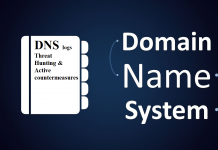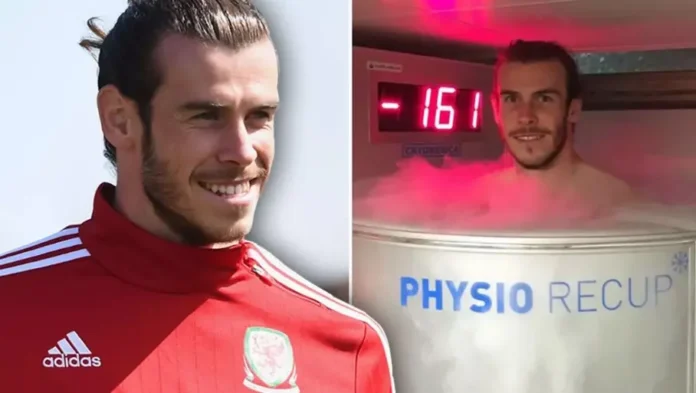For athletes, staying at the top of their game requires efficient recovery and peak physical condition. Cryotherapy, a cutting-edge treatment, has become an essential tool in modern sports science. It enhances performance, accelerates recovery, and reduces the risk of injuries. Industry leaders like https://cryomed.pro have made this advanced technology accessible to athletes worldwide.
Role of Cryotherapy in Enhancing Athletic Performance
The primary appeal of cryotherapy lies in its ability to optimize performance. By exposing the body to extremely low temperatures, athletes experience several physiological benefits:
- Improved blood circulation, ensuring better oxygen delivery to muscles.
- Reduced fatigue, enabling longer training sessions.
- Enhanced energy levels due to endorphin release during treatments.
This non-invasive approach gives athletes a competitive edge, allowing them to push their limits safely.
Benefits for Muscle Recovery and Injury Prevention
Cryotherapy is widely praised for its impact on muscle recovery and injury prevention. The exposure to cold stimulates natural healing processes, making it invaluable for high-performance athletes. Key benefits include:
- Decreased inflammation and swelling after intense workouts.
- Accelerated healing of micro-tears in muscle fibers.
- Lower risk of overuse injuries by reducing fatigue-related strain.
These effects ensure athletes can maintain consistent training schedules without risking long-term damage.
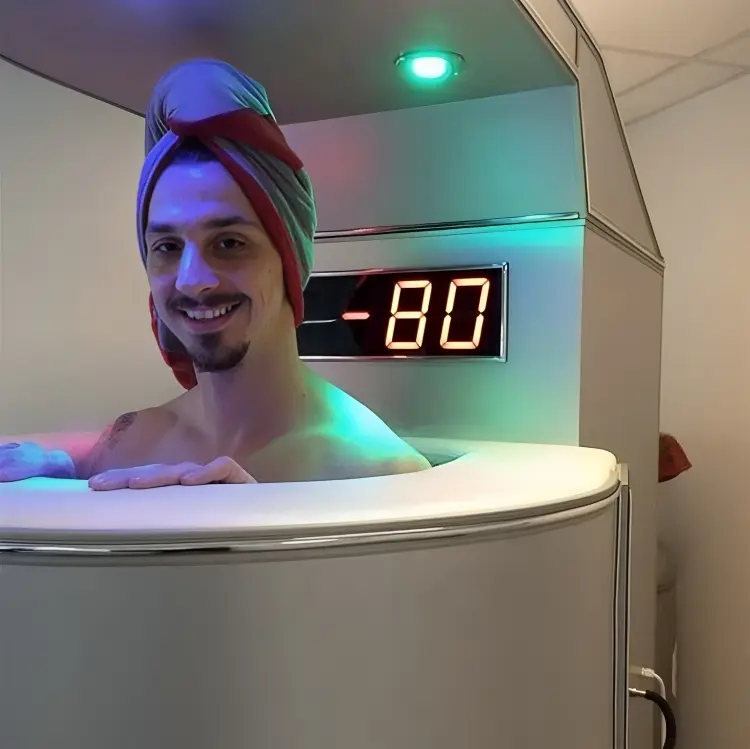
Cryotherapy Techniques Commonly Used by Athletes
Athletes use two primary cryotherapy modalities to enhance recovery and performance:
- Whole-Body Cryotherapy (WBC): Athletes stand in a specialized chamber for 2-3 minutes while their body is exposed to temperatures ranging from -110°C to -170°C (-166°F to -338°F). This systemic treatment triggers the release of anti-inflammatory proteins, boosts metabolism, and accelerates muscle recovery. Professional sports teams often install these chambers in their training facilities for regular use during intense training periods.
- Localized Cryotherapy: This targeted approach uses precise cold therapy devices to treat specific areas at -110°C to -130°C (-166°F to -266°F) for 5-10 minutes. Athletes commonly use this method for acute injury management, reducing post-workout inflammation, and treating chronic conditions like tendinitis. It’s particularly popular among contact sport athletes and those in sports requiring repetitive motions.
Athletes select their preferred method based on training intensity, injury status, and competition schedule, often incorporating both techniques into their recovery protocols.
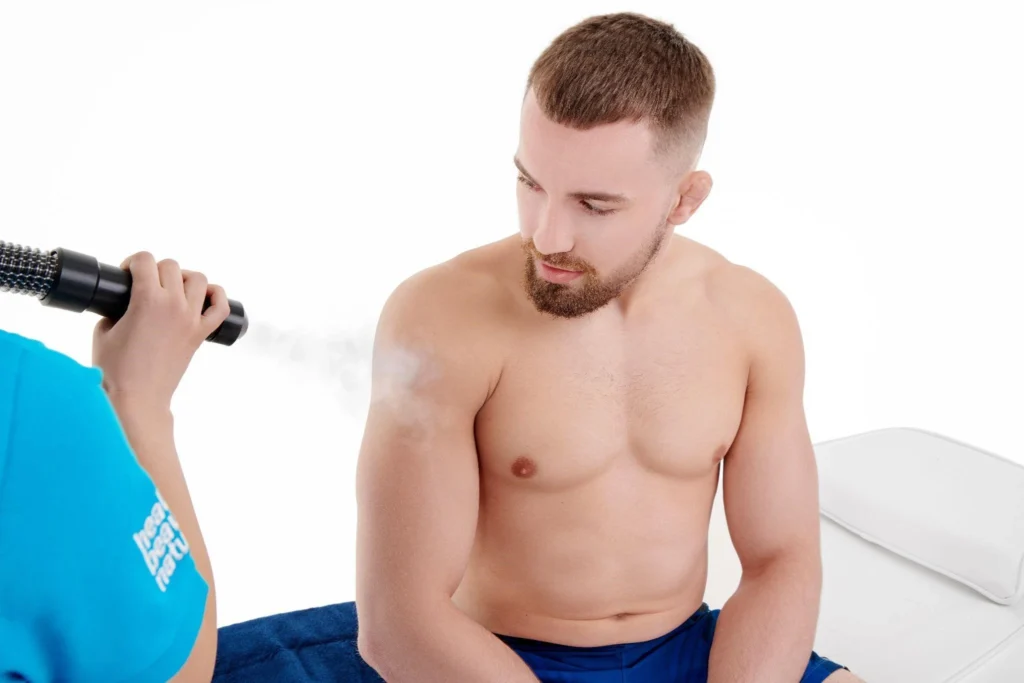
Safety Considerations for Athletic Cryotherapy
While cryotherapy offers powerful recovery benefits for athletes, proper safety protocols are essential to prevent potential complications and maximize therapeutic effects. Important guidelines that every athlete should follow include:
- Consulting with sports medicine professionals and certified cryotherapy specialists to develop a personalized treatment plan. These experts can determine the optimal session frequency (typically 2-3 times per week), duration (2-3 minutes for whole-body treatments), and temperature settings based on the athlete’s training schedule, injury history, and recovery needs. They can also monitor progress and adjust protocols as needed.
- Being aware of contraindications and health restrictions that make cryotherapy inadvisable. Athletes should avoid treatments if they have uncontrolled high blood pressure, cardiovascular conditions, open wounds, recent surgeries, cold allergies, or Raynaud’s syndrome. Pregnancy and certain medications can also make cryotherapy unsafe. A thorough medical screening should be completed before starting any cryotherapy regimen.
By following these precautions, athletes can enjoy the advantages of cryotherapy without unnecessary risks.
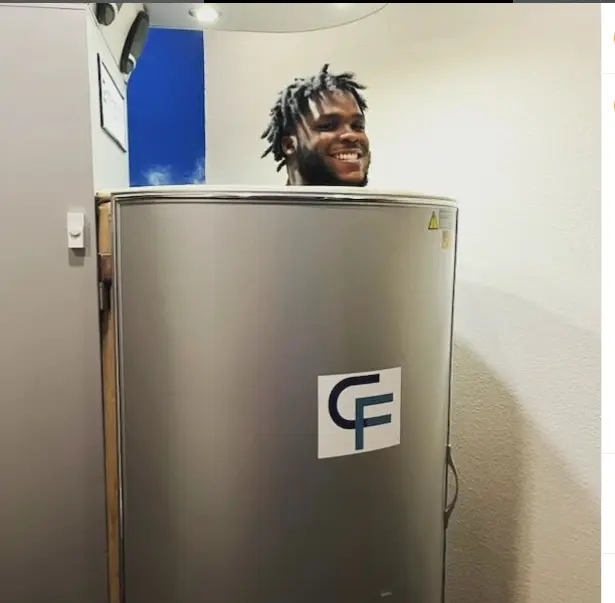
Success Stories and Case Studies in Sports
Elite athletes have embraced cryotherapy as a crucial element of their success and athletic longevity. Notable examples include:
- Cristiano Ronaldo has invested heavily in personal cryotherapy equipment, using daily sessions to maintain his exceptional performance level well into his 30s. The Portuguese footballer credits this recovery method for his remarkable durability and quick bounce-back between matches.
- LeBron James incorporates whole-body cryotherapy into his comprehensive recovery program, particularly during the grueling NBA season. The basketball superstar has highlighted how these treatments help him maintain peak performance through 82-game seasons and playoff runs.
These high-profile examples illustrate how cryotherapy has evolved from an innovative treatment to an essential tool in modern professional sports, helping elite athletes extend their careers and maintain consistent performance.
Conclusion
Cryotherapy has revolutionized recovery and performance enhancement for athletes across various sports. From reducing muscle fatigue to preventing injury, its techniques provide a safe and effective solution for pushing physical limits. With trusted providers integrating cryotherapy into an athletic routine has never been easier.






